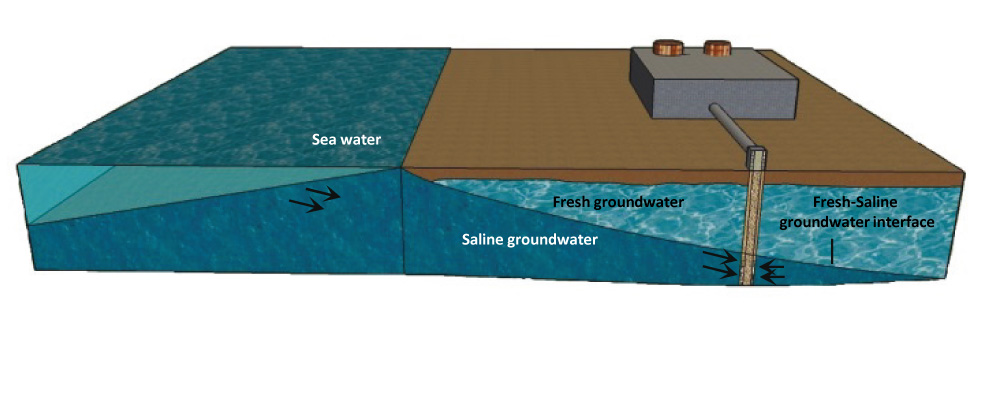Researchers at BGU have determined that saline groundwater from coastal aquifers is a better alternative water source than seawater for reverse osmosis (RO) desalination due to reduced membrane fouling and pre-treatment costs.
The study was published in Environmental Science & Technology and conducted by researchers at the Zuckerberg Institute for Water Research, the Department of Geological and Environmental Sciences and the Israel Geological Survey.
“Decision-makers in both California and Israel can use this research to seriously consider saline groundwater as a realistic alternative when planning future large-scale seawater desalination facilities,” explains Dr. Roni Kasher, a senior lecturer in the Zuckerberg Institute’s Department of Desalination and Water Treatment. “In Israel, seawater desalination accounts for 60 percent of the total freshwater supply, so these findings are significant.”
BGU researcher Shaked Stein adds," Saline groundwater results from seawater intrusion into coastal aquifers, shifting the fresh-saline water interface upward and landward, and replaces fresh groundwater with saline groundwater. The RO process in coastal aquifers will be helpful in restraining seawater intrusion."

Above: A diagram showing where saline groundwater is extracted for desalination
Other saline groundwater benefits include consistent annual water temperatures, and lower levels of dissolved oxygen, silt density and phytoplankton. It also decreases the cost of desalination. The RO desalination process of seawater requires significant energy and large plant area by valuable shorefront property, both of which increase the product water cost. "The study showed that aquifer filtration increases the feed water quality and reduces the need for extensive pre-treatment processes," explains Stein. "RO desalination with saline groundwater as feed water is also more efficient, with higher freshwater recoveries, less chemical use and maintenance, and therefore less overall operational costs."
Due to seasonal seawater characteristic fluctuations, Stein specifically recommends using saline groundwater in the summertime rather than seawater since the research identified higher membrane fouling in summer. “Salt rejection decreases in elevated temperatures due to changes in membrane permeability and mass transfer.”
According to Dr. Kasher, “In our study, we used normal (vertical) wells to take samples from the saline groundwater. All the wells were a maximum of 300 feet (100 meters) from the shoreline. However, the water intake can be accomplished using several different types of wells.”
Other researchers involved in the study include Drs. Amos Russak and Orit Sivan, BGU Department of Geological and Environmental Sciences; Dr. Yoram Oren BGU Department of Desalination and Water Treatment, Zuckerberg Institute for Water Research; Dr. Yoseph Yechieli, Geological Survey of Israel; Dr. Eyal Rahav, Israel Oceanographic and Limnological Research, National Institute of Oceanography.
Saline Groundwater from Coastal Aquifers as a Source for Desalination research received support from the Water Authority of Israel (a research grant to O. Sivan, R. Kasher, Y. Yechieli, Y. Oren, and a student fellowship to S. Stein). (DOI) 10.1021/acs.est.5b03634.
